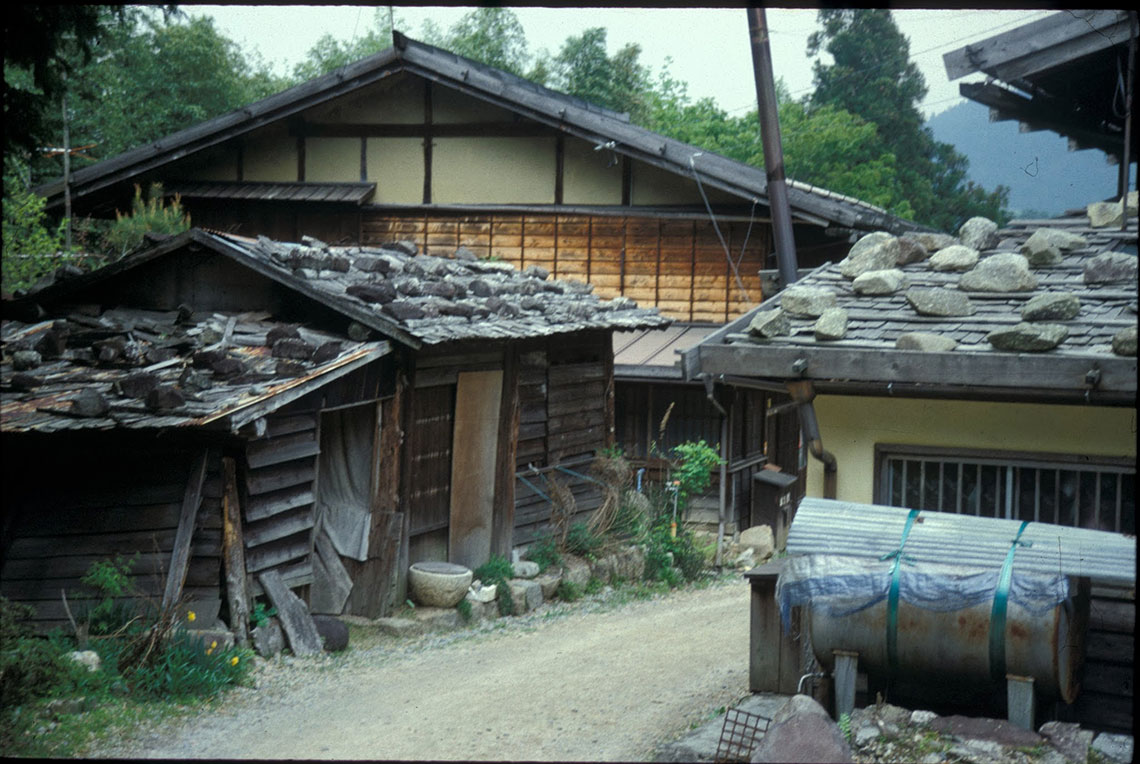From the fading roar of the Odaki-Medaki waterfalls the Nakasendo descends steeply through a deep valley which resonates to the rushing sound of smaller streams. Shaded by ancient woodland, this mile-long stretch to O-tsumago has some of the most romantic scenes of the whole journey.
Along the way numerous wayside shrines are passed, as well as an altar dedicated to the memory of a 16th century samurai. Traveling home alone from the wars he was asked by the local villagers to champion their cause against a hostile band of thieving ruffians. He saved the villagers from their plight, but was mortally wounded during the last moments of his valiant stand. Stories such as this inspired Kurosawa’s film of The Seven Samurai, and its later English adaptation, The Magnificent Seven.
Breaking out of the woodlands into the broader Kiso valley the small hamlet of O-tsumago is reached. The buildings are wonderfully preserved in the traditional, provincial style of Shinano (modern Nagano prefecture). Many of them still operate as inns to cater for the thriving tourist trade in this area.
The reason for O-tsumago (‘Greater Tsumago’) to exist is not clear. Tsumago, the next post-town, was less than 500 people in 1841, hardly large enough to justify cloning itself at O-tsumago. Perhaps O-tsumago grew as an unofficial resting place before the reasonably long ascent up Magome-toge.


